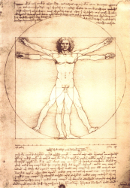Chess Principles Introduction: Unterschied zwischen den Versionen
Aus MattWiki
Matt (Diskussion | Beiträge) Keine Bearbeitungszusammenfassung |
Matt (Diskussion | Beiträge) Keine Bearbeitungszusammenfassung |
||
| (Eine dazwischenliegende Version desselben Benutzers wird nicht angezeigt) | |||
| Zeile 18: | Zeile 18: | ||
These are not necessarily the best moves, but these are solid principles to achieve a good position without memorizing openings. | These are not necessarily the best moves, but these are solid principles to achieve a good position without memorizing openings. | ||
=== 0 - 1000 ELO Opening Principles === | |||
* Develop knights before bishops | |||
* With knight on f8 there is no mate, with knight on f1 there is no fun | |||
== The Middlegame == | == The Middlegame == | ||
== The Endgame == | == The Endgame == | ||
[[Kategorie:Chess]] | [[Kategorie:Chess]] | ||
Aktuelle Version vom 28. Juli 2024, 14:06 Uhr
This article is an introduction into Chess principles during the different stages of the game.
The Opening
The opening is considered complete, when the rooks are connected.
10 Rules for the Opening
- Develop: Use all pieces for your game
- Develop: Improve position by expanding it
- Develop: Bring out minor pieces
- Control the center by attacking it
- Never move a piece twice within first 10 moves
- Castle the King early, meaning within first 10 moves if not within first 7 moves
- Don't bring out the Queen before all minor pieces are developed and the King is castled.
- Develop pieces with a purpose
- Think about your opponens moves and threads
- Connect the rooks
These are not necessarily the best moves, but these are solid principles to achieve a good position without memorizing openings.
0 - 1000 ELO Opening Principles
- Develop knights before bishops
- With knight on f8 there is no mate, with knight on f1 there is no fun
